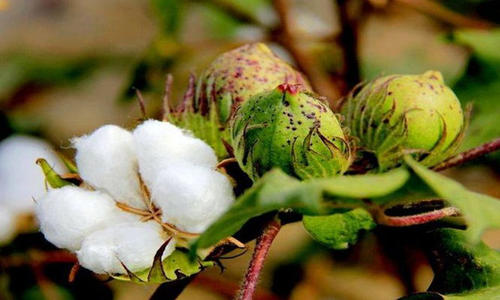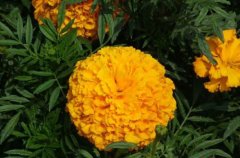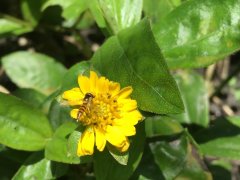The transformation effect of cotton planting on soil, the harm of cotton planting to soil is very great?
India is an important cotton producer in the world, however, there are few non-genetically modified cotton seeds in India because there is something wrong with the original cotton seeds. This is what we can't feel at the end of consumers and users.
About ten years ago, recognizing the disasters and problems facing the earth's environment, a company was set up to make its own brand of infant clothing made of organic cotton, and to share lectures to continuously promote organic cotton, hoping to produce clothes that reduce pesticide toxicity on the one hand, and to educate consumers on the other hand to understand that clothing is closely related to personal health and the vitality of the earth.
To promote the wearing of organic cotton-padded clothes, the ultimate goal is land. It is hoped that more land in the world can be turned into organic cultivation. As a consumer, we can do at least two simple things, one is "care" and the other is "practice".
In the past, the various needs of human ancestors in life were collected and drawn from nature. However, after entering the industrial and commercial society, many needs in life turned to buying and selling, paying for services, which not only cut off the connection between man and nature, so that the necessities of life become commodities, but also let people lose a lot of the ability to do things themselves in life.
Cotton is a shrub of the genus Cotton of Malvaceae. Its flowers are the same as those of Malvaceae-Corydalis, okra, hibiscus, hibiscus, hibiscus. The flowers are very similar, and the fruit is a capsule. The flowers are white or yellow when they first bloom. Soon after flowering, the flowers will gradually turn crimson, and the petals fall behind and leave the green cotton fruit to continue to grow. The fiber of cotton grows from the cottonseed epidermis in the cottonfruit and fills the whole cottonfruit. When the cotton fruit is ripe, the pericarp turns brown and explodes into a beige cotton ball. (the cotton balls of colored cotton are yellowish brown and green)

Only 3% of the world's fields are cotton fields. However, the amount of agricultural chemicals used in cotton fields accounts for 25% of the world's pesticide use! A pure cotton T-shirt, using nearly 1/3 pounds of pesticides, harms not only the health of cotton farmers, but also the land. In a cotton field where cotton is grown, the land is so acidified ten years later that it can no longer grow anything.
It is easy to buy many cheap 100-yuan T-shirts on the market. however, the land price lost in the production process is not included in the price of clothes. Pesticides used in farmland include fungicides, herbicides, pesticides and defoliants, which kill all microbes, pests and beneficial insects and weeds in cotton fields. Due to the different time of cotton blooming and fruiting, cotton blossoms and ripens from the bottom to the top, and when the fruit under the plant is ripe and burst, the cotton fruit above is still green or still blooming, but non-organic cotton farmers in order to prevent insects, all spray, will let the cotton balls that first mature and burst below carry a lot of pesticides.
What about defoliant? It turns out that in order to facilitate harvest, non-organic cotton farmers will spray defoliant in the cotton fields, so that all the leaves of the cotton will fall off. At a glance, there is only a piece of white cotton fruit in the non-organic cotton fields. Defoliant is a chemical weapon: agent Orange used by the US military in the Vietnam War from 1965 to 1971. At that time, 75 million pounds were sprayed in the jungles of Vietnam, making the farmland unable to grow any crops, causing many fetal deformities, extinction of life and death of forests.
Organic cotton fields will not use defoliant, cotton fields at a glance there are a lot of leaves, will not be bare. Cotton farmers will wait for the fruit to ripen and harvest it several times. The earth is a closed environment. Although Taiwan does not produce cotton, pesticides still pass through soil, groundwater, rivers, lakes and oceans. The food chain enters other parts of the world. So DDT is also found in Antarctic penguins.
- Prev

What are South African marigold pests? How to deal with South African marigold after withering
Marigolds rarely have disease and pest problems. Occasionally moist soil or pests can induce one of several fungal infections, through discolored spots, mold coatings or wilting on leaves. The best defense is to keep weeds and marigolds planted in place, well drained
- Next

How to kill pests without pesticides in farmland? The importance of environmental diversity in pest regulation
The ultimate goal of farmland management is to produce food, but crops act as animal habitats for most of the time before they are served on the table. Some animals living in the field do not affect the crop harvest, but some will affect the crop yield and quality.
Related
- A course of planting techniques and methods on how to grow carrots
- How to plant the latest tulips?
- Is it better to pick tea in the morning or in the afternoon? When is the best time for tea to be picked? what is the third or fifth tea?
- Launch Yuanxiao Happy combination Haocha + Tea Yuan healthy Taste
- Penghu Tourism "Fireworks 20 Parade with You"
- 2022 West Lake Happiness holds "Digital Revitalization Voucher" and draws iphone13 and laptop.
- Banqiao Fuzhou social houses are designed to change start-up combined with police elimination to create a safe and livable environment
- The convenient measure of "mechanical weeding" in Xinbei has been abused and the Agriculture Bureau has imposed heavy penalties on the illegal land consolidation.
- Changgeng University Joins Hands with Four Memory Factories to Rescue Memory Talent Shortage
- The list of Taiwan's top 100 MVP managers is listed by the Director-General of the Farmers' Association of Sanxia District.

